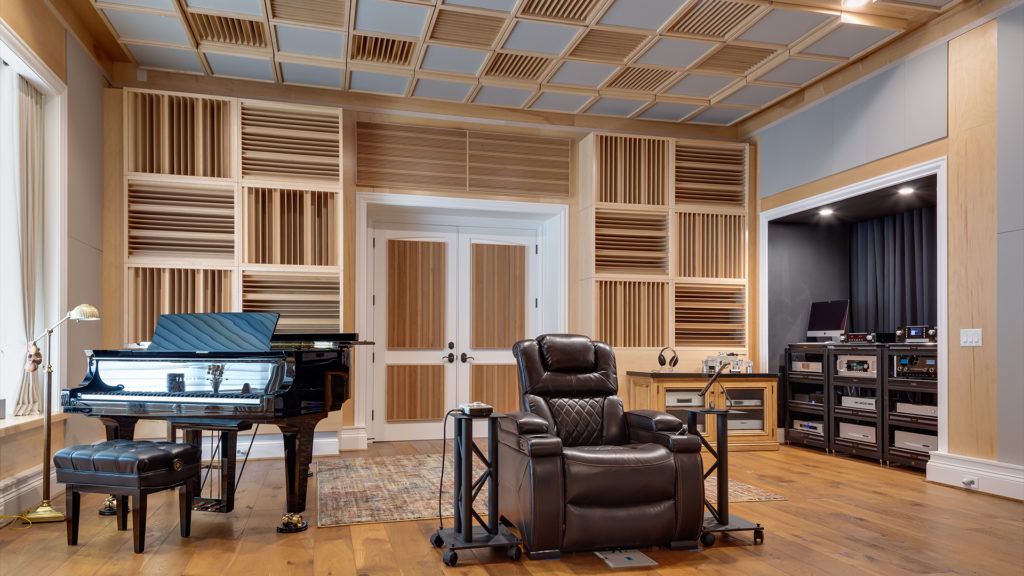
We have been building rooms for 40 + years and realize what it takes to create a well balanced critical listening environment. At Acoustic Fields, we are actual builders/designers. We design your space and take into consideration all noise along with absorption and diffusion requirements to match your usage. We assist you with taking the noise measurements with your cell phone and then recording that data into our online form. You then return the form and we send you a drawing of the specific barrier build and type that you need to minimize the transmission of your particular noise issues. Along with our design services, we can assist you with a free room analysis of your existing room. We will look at all the axial, tangential, and oblique modal issues and show you their frequency, amplitude and location. We then calculate the amount of treatment requirements the room needs to adjust to your chosen usage. Fill out the information in this link and be sure to include up to four pictures of your room wall surfaces. https://www.acousticfields.com/free-room-analysis/ Here is a link to what we are all about when it comes to critical audio rooms: https://www.acousticfields.com/about/

Power is always a concern in any critical listening room. Clean power produces clean sound. We want to treat the power that goes to our equipment with care and consideration. Remember that achieving a quality sound is all about doing a lot of little things and in the correct order or sequence. We want to stay away from the power that is in the existing structure. Every line in the building that is connected to the same power panel shares the distortion of the other lines. The kitchen blender noise can go through the power line and into our equipment. Even though most energy processors and amplifying sources have some filters that reduce noise in the existing lines, it is best to reduce the noise at source and not rely on internal filters within the electronic circuitry.. Our equipment needs its own power source. This is termed a dedicated line. A dedicated power line is just that. It is dedicated to transmitting power into our electronics such as our amplifiers, preamps, and processors. It starts from its own power panel which is dedicated only to a circuit that is for our critical listening electronics. You then run lines from the panel into the room. Care must be taken to isolate each dedicated line when running in parallel. Music and voice are different from noise. The two should never be in the same room together.
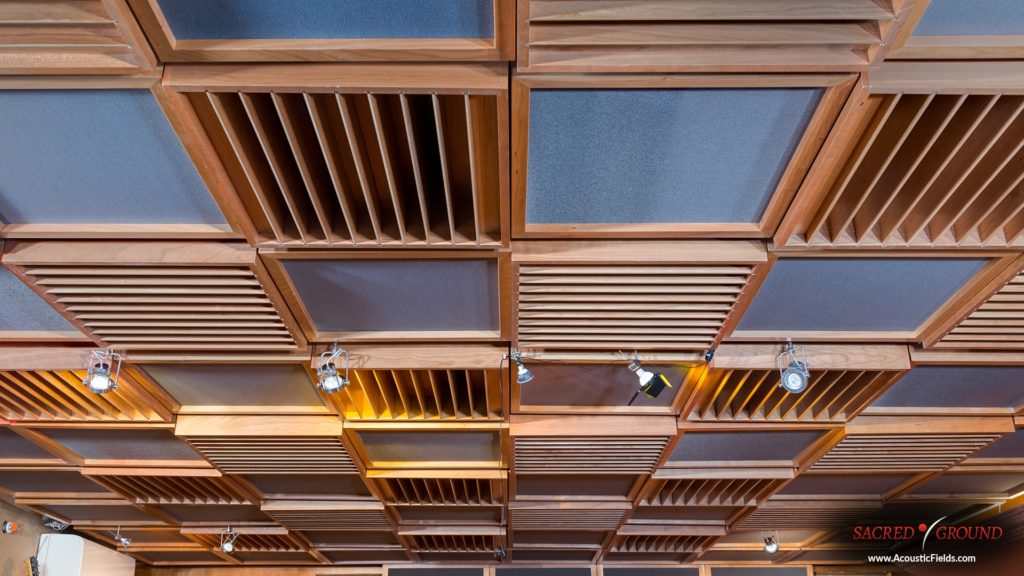
The floor to ceiling dimension in our small rooms is the smallest dimension of the three within the room. Since it is the shortest, it will produce many low-frequency axial modal issues. An 8′ ceiling height will produce unwanted room pressures starting at 50 Hz. and going through 70 Hz. We will also have the brothers and sisters of the family fundamentals at 100 through 140 Hz. which is right in the range of our vocals. In order to treat these unwanted pressure modes from floor to ceiling we have two options. We can treat the floor or we can treat the ceiling. The floor can be treated using a platform that is tuned to the frequency and amplitude issues within your room. Most platforms will average around 10″ in depth to deal with the floor to ceiling issues. Our next option is to treat the ceiling with individual modules that can be arranged on the ceiling to address the unwanted floor to ceiling axial modal pressure issues. In the photo above you can see diffusion and absorption installed within a ceiling. The absorption technology is behind the fabric units and the diffusion are the wood units. You can calculate how many modules you require and at what position on the ceiling you need them.
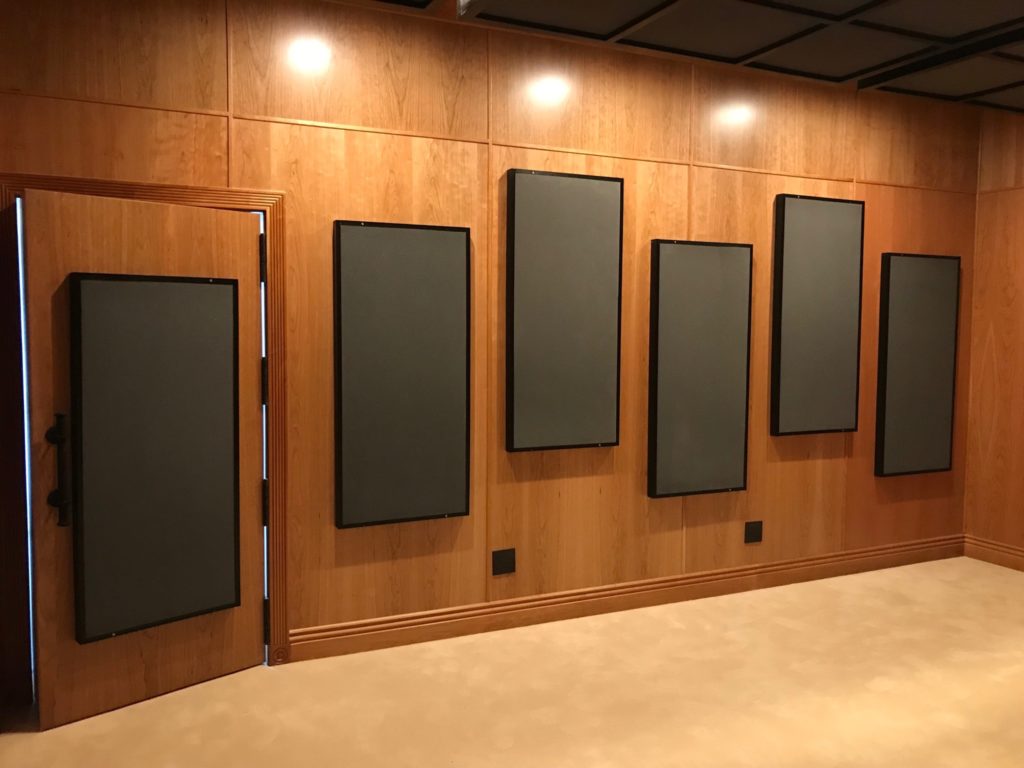
You see it all the time on the net. Build your critical listening room using drywall. This has been a standard approach for years. Drywall has a negative impact on middle and high frequencies. It can overabsob middle frequencies where voice lies and it can also drain the sparkle and energy out of high frequencies.Remember that sound takes on the characteristics of the surface areas that it starikes. If sound strikes glass, you get glass sound which is harsh and brittle.If sound strikes wood you get a more balanced vocal range that sounds more “organic” or real in its presentation value. When using materials within any critical listening room, stay with organic materials such as wood, natural fabrics, and stone. We use cherry plywood in all of our critical listening rooms regardless of the usage. We use cherry ply in both consumer and professional applications. Here is a picture of a listening room with cherry veneer and our foam panels. Notice the deep and rich grain of the plywood as it matures over time. That photo was taken 90 days after installation.A wood surface area within your room will increase reverberation times https://en.wikipedia.org/wiki/Reverberation but we can manage that increase with the proper rates and levels of absorption across the proper room surface areas.
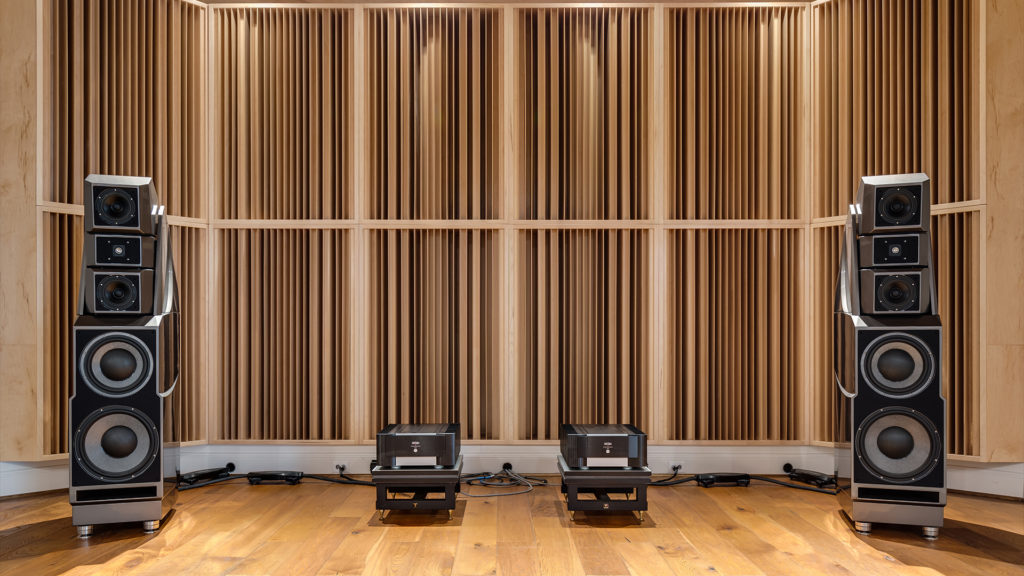
In any two channel room the front and rear walls will always benefit from diffusion https://ccrma.stanford.edu/~kglee/pubs/2dmesh_QRD®_rev1/node2.html . Diffusion is a technology to make a small room sound like a larger room. Diffusion takes “big” reflections from the front and rear wall surfaces and breaks the larger reflections into a series of smaller ones. Larger reflections are easier for our brains to process distance from that surface area. A stronger reflection allows our brain to locate distance to the wall from our listening position much easier. If we use diffusion, we take that stronger reflection and break it up into smaller ones which are less easy for our brains to localize.One dimension quadratic diffusion is shown in the picture above. Quadratic diffusion is the only true diffuser. It can be positioned in either a vertical or horizontal position. A vertically positioned diffuser spreads our reflections in a horizontal array. A horizontally positioned diffuser sends out energy into a vertical array. You can also use both vertical and horizontal diffusion to create two dimensions. Two dimensional diffusion is used when distances from the listener to the walls is too small for one dimensional diffusion. https://www.acousticfields.com/quadratic-diffusion-diffused/.


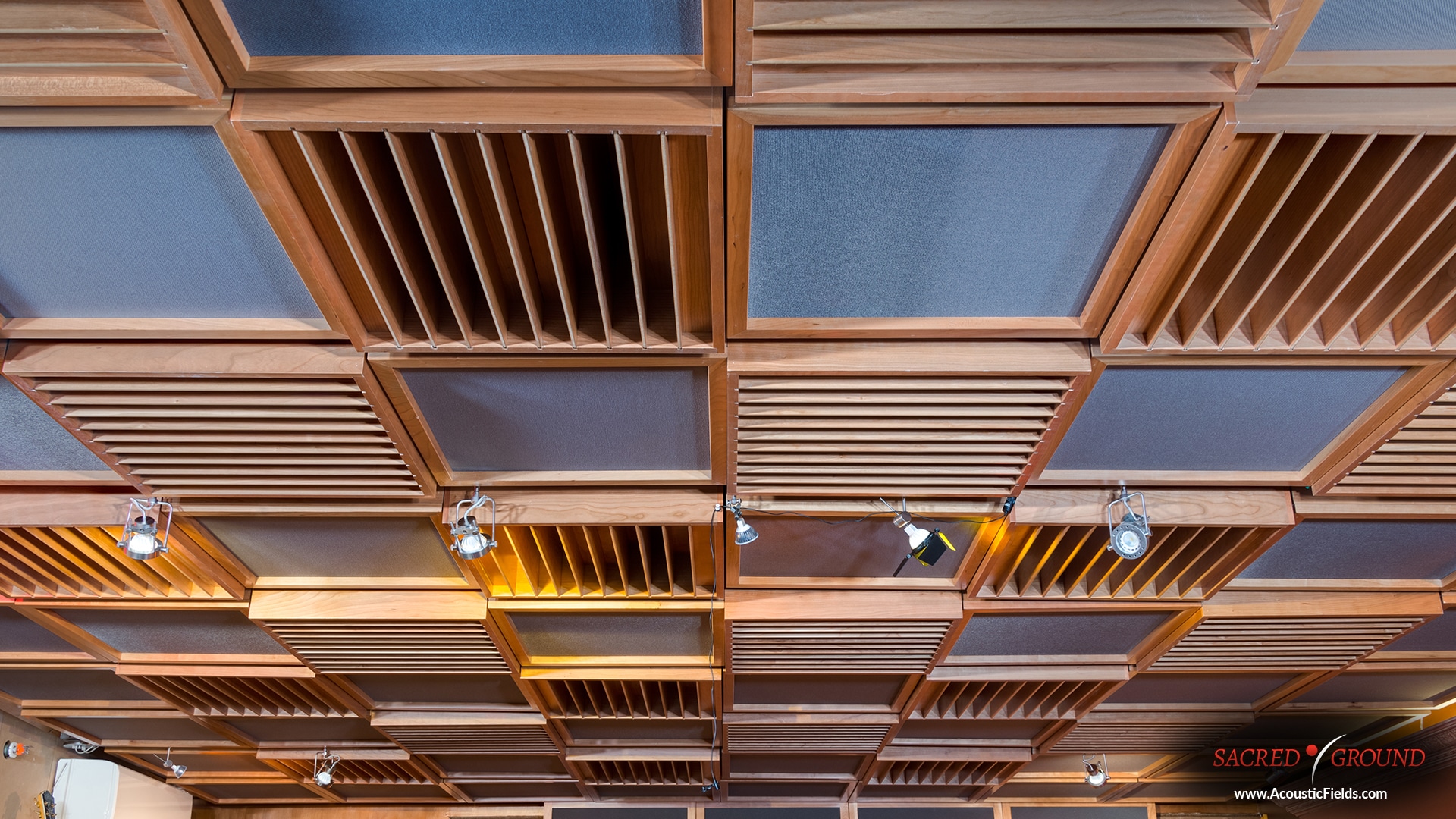





The discussion on ductwork noise transmission from Acoustic Fields highlights crucial aspects of HVAC system acoustics. The movement of air…
Great build plans. thank you Denis
You must use absorption. Never place a chair against a wall.
A friend and I built several diffusors using these plans and they turned out absolutely beautiful. Very good instructions and…